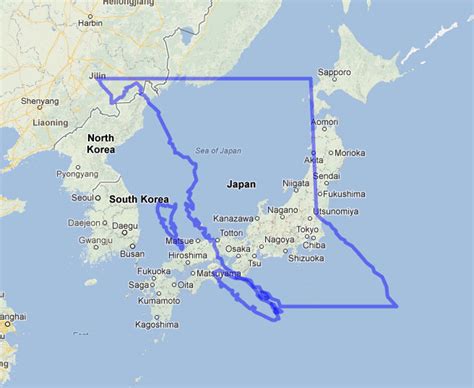How Does Japan Compare In Size With British Columbia
Ronan Farrow
Apr 04, 2025 · 2 min read

Table of Contents
How Does Japan Compare in Size With British Columbia?
A common question among geography enthusiasts and travelers alike is how Japan compares in size to British Columbia. While both are geographically diverse and captivating regions, they differ significantly in their total land area. Let's delve into a detailed comparison.
Land Area: A Stark Contrast
Japan, an archipelago nation located off the eastern coast of Asia, boasts a total land area of approximately 377,975 square kilometers (146,323 square miles). This includes its four main islands – Honshu, Hokkaido, Kyushu, and Shikoku – and numerous smaller islands.
British Columbia, a province on Canada's west coast, covers a considerably larger area. Its total land area spans approximately 944,735 square kilometers (364,765 square miles). This vast territory encompasses diverse landscapes, from towering mountain ranges like the Rockies to expansive rainforests and coastlines.
The Key Difference: British Columbia is more than twice the size of Japan.
Population Density: A World Apart
Despite the size difference, population density presents a fascinating contrast. Japan, with its relatively smaller land area, supports a significantly larger population than British Columbia. This results in a much higher population density in Japan. The concentration of people in urban areas like Tokyo, Osaka, and Nagoya contributes to this.
Geographic Features: Diverse Landscapes
Both regions boast stunning and diverse landscapes, though their specific characteristics differ.
Japan:
- Volcanic Islands: Japan's geography is shaped by its location along the Pacific Ring of Fire, leading to volcanic activity and mountainous terrain. Active volcanoes and frequent seismic activity are significant aspects of the landscape.
- Coastal Features: The archipelago nature of Japan provides extensive coastline, leading to significant fishing industries and coastal towns.
- Dense Forests: Significant portions of Japan are covered in forests, adding to the visual beauty and providing natural resources.
British Columbia:
- Mountain Ranges: The Coast Mountains and Rocky Mountains dominate much of British Columbia's landscape, creating dramatic vistas and opportunities for outdoor recreation.
- Vast Forests: British Columbia boasts extensive old-growth forests, recognized for their biodiversity and ecological importance.
- Coastal Regions: The province has a lengthy Pacific coastline with diverse ecosystems, from temperate rainforests to rocky beaches.
Conclusion: A Comparative Overview
In summary, while both Japan and British Columbia offer spectacular landscapes and rich cultural experiences, their sizes differ greatly. British Columbia's significantly larger land area contrasts sharply with Japan's more compact geography. However, both regions are remarkable destinations offering unique natural beauty and rich cultural experiences to visitors and residents alike. The comparison highlights the incredible variety of landscapes and geographical features found across the globe.
Featured Posts
Also read the following articles
| Article Title | Date |
|---|---|
| How Far Did The Shepherds Travel To See Jesus | Apr 04, 2025 |
| How Do You Know Who Your Patron Saint Is | Apr 04, 2025 |
| How Fast Does The Aovo Pro Scooter Go | Apr 04, 2025 |
| How Deep Is Seneca Lake Ohio | Apr 04, 2025 |
| How Did Jesus Handle Narcissists | Apr 04, 2025 |
Latest Posts
-
How Long Can A Malpractice Lawsuit Take
Apr 05, 2025
-
How Long Can A Horse Live With Epm Without Treatment
Apr 05, 2025
-
How Long Can A Horse Live With Copd
Apr 05, 2025
-
How Long Can A Horse Go Without Eating
Apr 05, 2025
-
How Long Can A Generac Run Continuously
Apr 05, 2025
Thank you for visiting our website which covers about How Does Japan Compare In Size With British Columbia . We hope the information provided has been useful to you. Feel free to contact us if you have any questions or need further assistance. See you next time and don't miss to bookmark.
